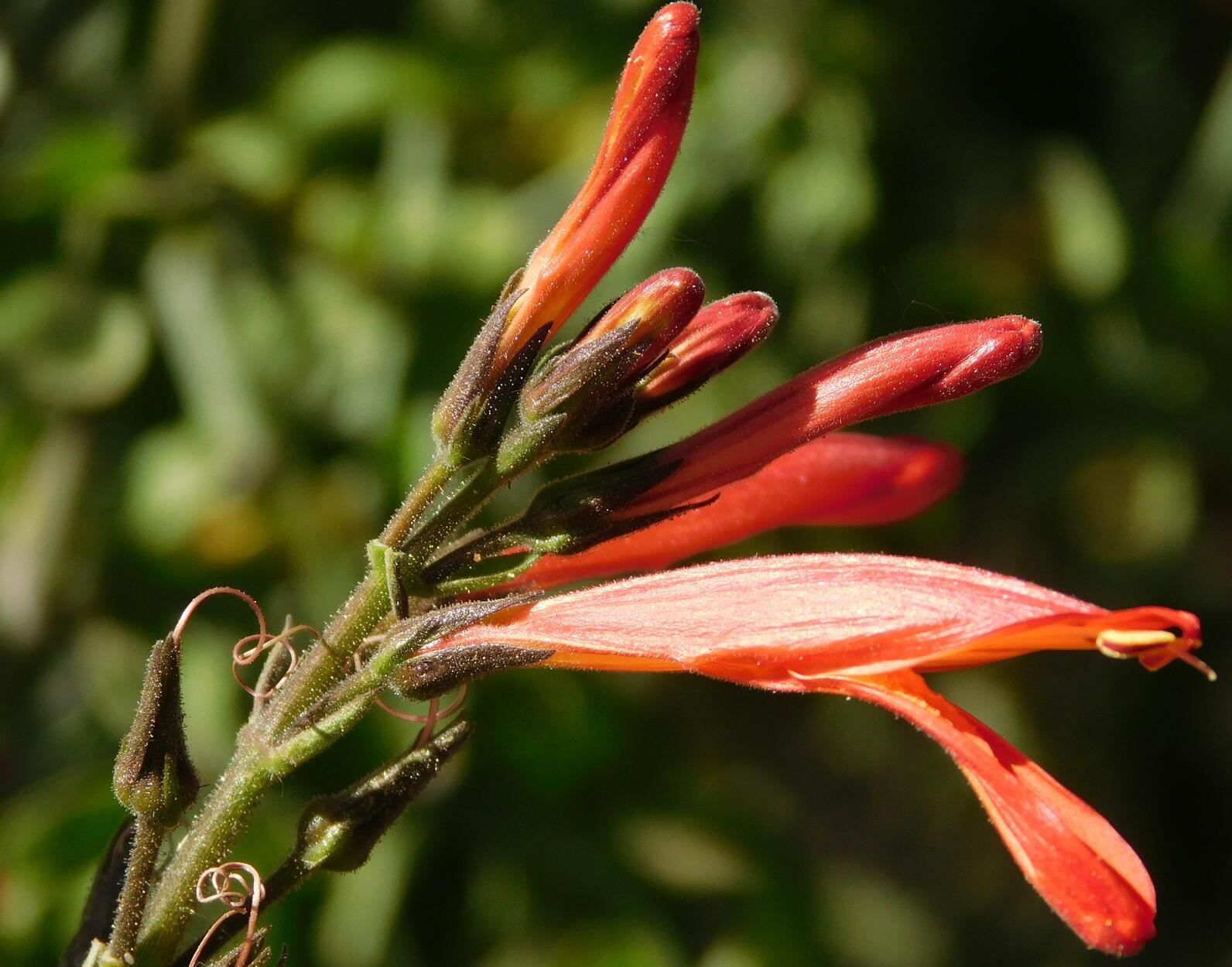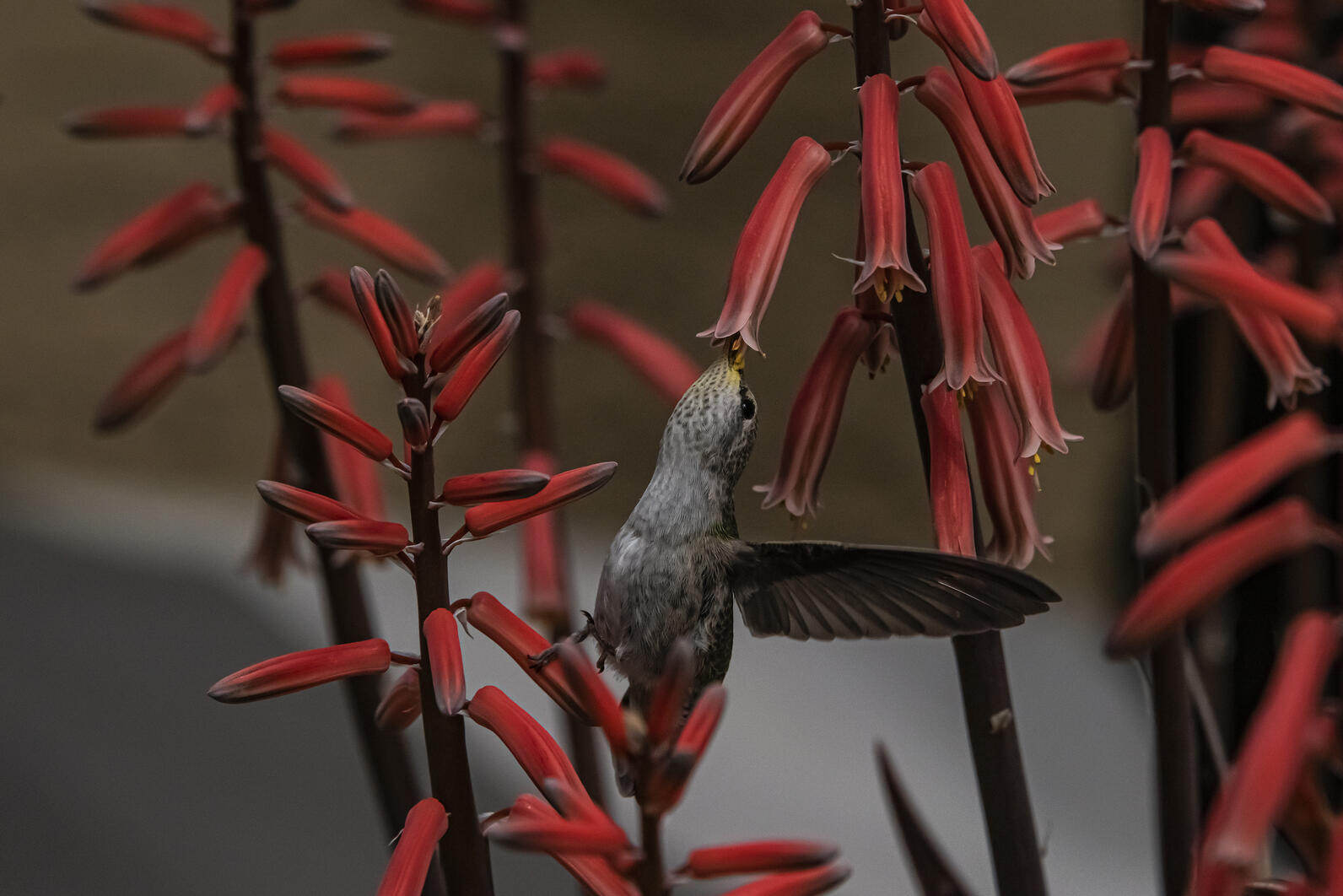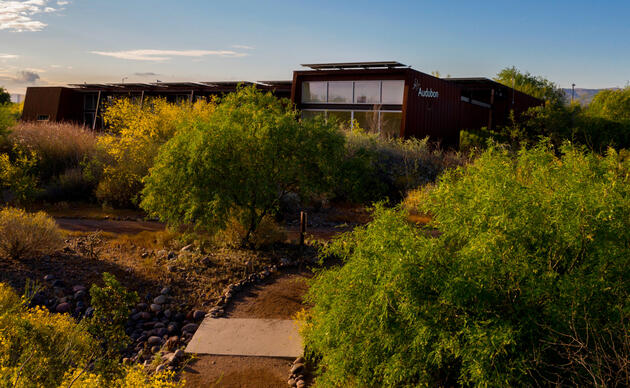If Arizona’s hummingbirds could vote on a state flower, it would be Chuparosa (Justicia californica). A mainstay of most wildlife gardens, this long-suffering desert beauty asks little and gives much. It can be grown long and lanky, spindly branches vining into trees — or pruned to take on a more civilized appearance. Either way, gardeners are treated to lipstick-like blooms almost year-round. Hummingbirds, too, highly endorse the profuse blossoms that fit the textbook description of a hummingbird flower: tubular and red. Very rarely one might encounter a plant with yellow or orange flowers…and rest assured that the hummingbirds make good use of these as well.
Hardiness
Tolerant of poor soils, drought conditions, and even the blazing sun, Chuparosa is truly a wonder plant. Although difficult (at least for me) to propagate from cuttings, it will readily self-seed. The seed pods themselves are delightful, tiny boxing-glove-shaped affairs that will bust apart with force upon ripening. What a marvelous way for this plant to fling seeds every which way! Those that accuse Chuparosa of a rangy, weedy appearance need only chastise themselves and take to the plant with a pair of shears. Gentle now, those green stems do double-duty; the plant is drought deciduous and can photosynthesize through the stems. Although Chuparosa can get frost nipped below 32 degrees, they are hearty to the mid-20s and will spring back to life from the roots when the temperature warms — just prune back the damaged areas.

Visitors
Chuparosa typically grows to a four-foot mound, and the blooming plant is a sight to behold. The next time you find yourself enjoying one, let your ears partake, too. Listen closely for a new springtime sound: the wing buzz of a Black-chinned Hummingbird. Like the hum of a very small lightsaber, this unique noise means that there’s a new (and hungry) kid in town. Fresh from a winter vacation in Mexico, Black-chinned Hummingbirds return to Arizona to find a mate, nest, raise young, and prepare for fall migration. Their arrival heralds spring and reminds us that our lovely gardens can provide critical resources for migratory birds.

Besides the Chuparosa, there are many other desert-adapted plants that will attract hummingbirds. Here are a few more suggestions:
Still not sure what to plant for birds? Check out Audubon’s Native Plant Database.
This article was originally published in Water - Use It Wisely.




